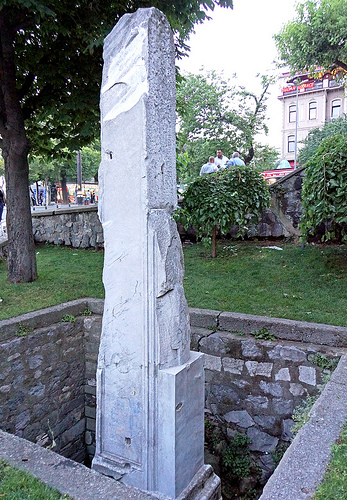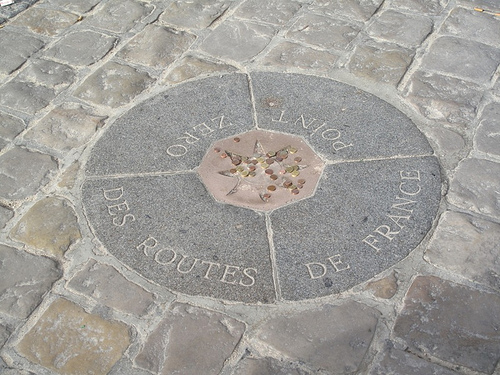Roman roads were the key infrastructure of the Roman Empire. The Empire was focused on Rome and so were its roads – symbolized by the Miliarium Aureum (the Golden Milestone) at the forum in Rome.
When Augustus became the first Roman Emperor in 27 BC, roman roads lead all around the Mediterranean Sea. They were crucial to administration, warfare and economy of the huge area under Roman control. Well maintained roads have not been an invention of the Romans. They did however, use their engineering skills to perfect them.
Augustus, in his role as supervisor of roads, added a new monument to the forum in Rome. At the center of the city itself, the Golden Milestone symbolized the center of the road network leading away from the capital city. Although sources speak of this powerful symbol, there is no archeological evidence for it.
A marble fragment, typically attributed to the Golden Milestone, seems to have been part of a monument with a somewhat similar purpose, the Navel of the City of Rome (Umbilicus urbis). This temple, supposedly built by Romulus the legendary founder of Rome, was the considered the center of Rome and the Empire long before the reign of Augustus.
Building the Golden Milestone nearby – a monument to a very similar idea – points to the importance of the roads for the Roman Empire. It was also popular enough to be copied: Following the partition of the Empire, Constantinople (today’s Istanbul) became the capital of the Eastern Empire. Consequently, a new Golden Milestone was built there. It is called Milion and contrary to the original milestone in Rome, fragments of it still exist.

Centuries later, many countries established Kilometer Zero markers based on the idea of the Golden Milestone. France, Spain and Russia for example have markers in the center of their capitals, from where distances on major highways are measured.

Not only does did the idea of the Golden Milestone at the heart of a road network survive the centuries. The Roman roads itself survived to a great extent. Their presence is not as obvious as the remains of theaters or temples. While only some fragments of originally paved roads still exist, the remaining large percentage of the estimated total of 400,000 km did not vanish.
We can find these historic routes in various forms today. Some popular examples are the Via Flaminia in Italy, the Via de la Plata in Spain or the Fosse Way in England. If you live in an area that was part of the Roman Empire, there are less obvious remains. It could be that some rural path you know turns out to be based on a Roman road a couple of hundred miles away from the Golden Milestone.
Then sign up for our free email newsletter to get all our new posts right to your inbox.
